13 Vintage Cameras From the 1900s That Revolutionized Photography
Photography has come a long way since its early days, but vintage cameras from the 1900s played a crucial role in shaping how we capture memories today. These cameras weren’t just tools for taking pictures; they were gateways to a new way of seeing the world. From simple box cameras to sophisticated folding designs, each model brought something unique to the table. They made photography accessible to a wider audience and sparked a creative revolution. With advancements in design and technology, they paved the way for future innovations in the field.
This post may contain affiliate links, which helps keep this content free. Please read our disclosure for more info.
Kodak No. 2A Brownie

The Kodak No. 2A Brownie, introduced in 1901, played a pivotal role in bringing photography to the masses. This simple box camera used 116 film, offering a larger negative size than its predecessors, making it ideal for family snapshots. Its low cost and ease of use made it accessible to people who had never owned a camera before, allowing for casual photography without technical expertise.
The Brownie was marketed to be inexpensive and easy for children and adults alike to use, transforming the way people thought about and practiced photography. Today, this camera is a popular collector’s item due to its historical significance. Depending on the condition, whether it comes with original packaging, or if it includes accessories like the leather case, the Kodak No. 2A Brownie typically sells for $30-$60.
Kodak No. 3A Folding Pocket
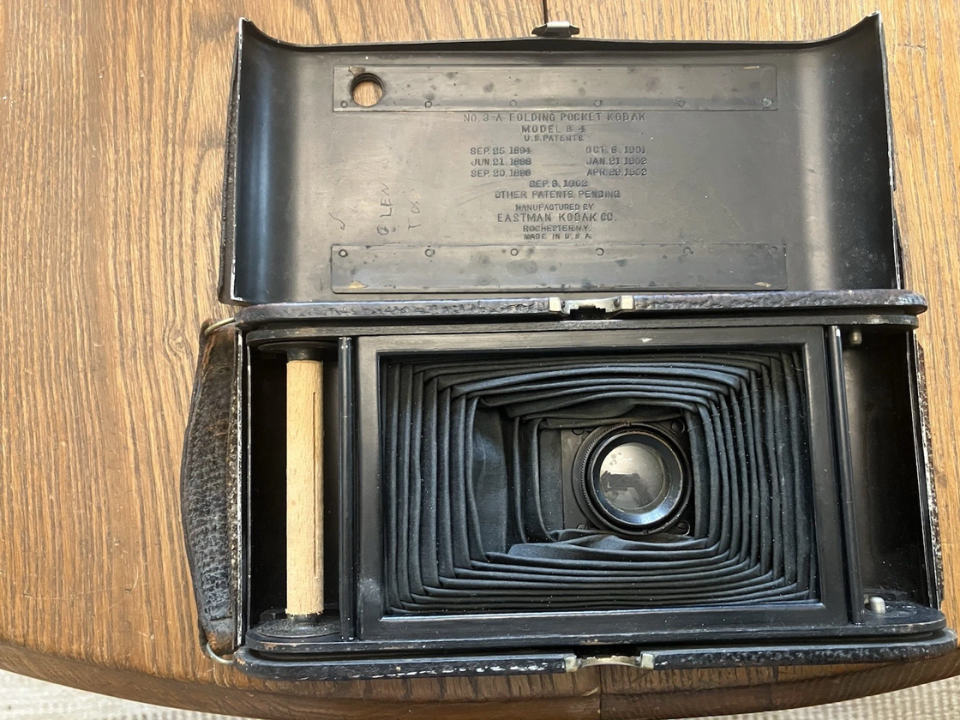
The Kodak No. 3A Folding Pocket was a significant upgrade from the earlier Brownie models, offering more portability and a higher-quality lens. Released around 1903, it folded up into a compact form, making it easy for photographers to take on the go. It used 122 film and was capable of producing more detailed images compared to simpler models, bridging the gap between consumer and enthusiast cameras.
This folding camera was designed for those who wanted to capture images with a bit more sophistication than the average snapshot. As a result, the Kodak No. 3A is a beloved collector’s item, with the folding mechanism and superior build making it stand out. The typical market price for this camera ranges from $90-$150, with rare editions or models in excellent condition commanding higher prices.
Kodak No. 3A Folding Hawkeye
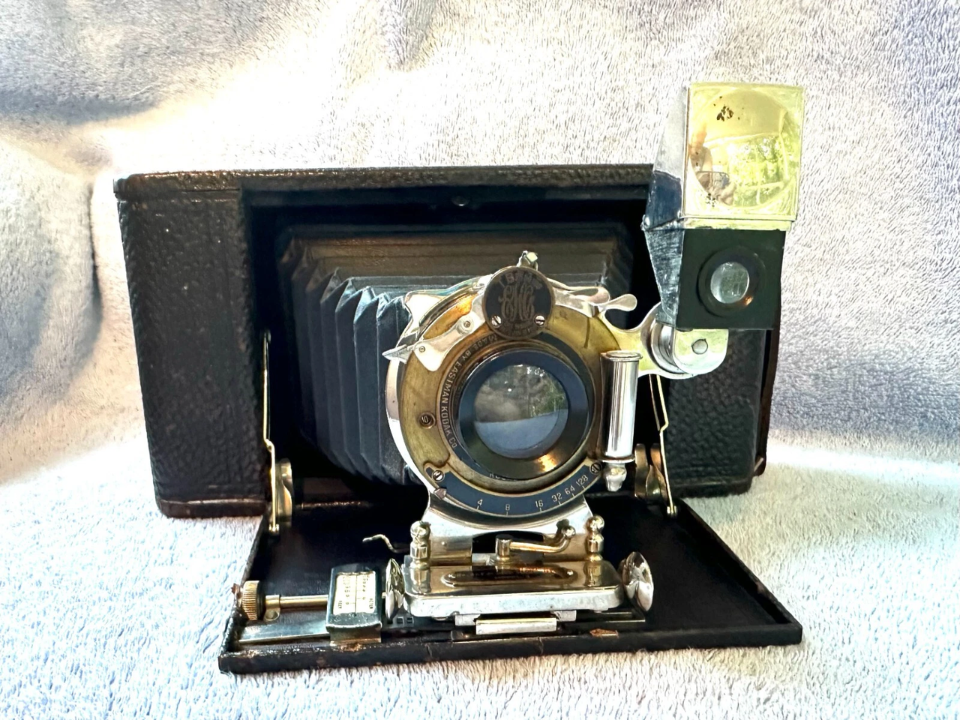
The Kodak No. 3A Folding Hawkeye is one of Kodak’s folding cameras that became a staple for both amateur and semi-professional photographers. This model was introduced in the 1900s and offered an easy-to-use interface, making it an excellent choice for everyday photography. The folding design allowed users to keep the camera compact when not in use, which was especially valuable for photographers who needed to travel with their equipment.
Its design offered better optics than earlier Brownie models, which made it suitable for more serious photographers looking for high-quality prints. The camera’s combination of portability, image quality, and ease of use helped further Kodak’s mission to make photography accessible to a larger audience. The Kodak No. 3A Folding Hawkeye typically sells for $60-$100, with well-preserved models that come with original accessories or cases commanding higher prices.
Kodak No. 3A Folding Autographic Brownie

The Kodak No. 3A Folding Autographic Brownie was a significant upgrade in the Brownie lineup, incorporating Kodak’s autographic system, which allowed users to write captions directly onto the film backing. This added a personal touch to photographs and made it easier for users to document their photos with notes or comments. It was a clever design addition that combined simplicity with creative features for everyday users.
This model also boasted the folding mechanism, which made it much more portable compared to larger format cameras. The autographic feature was a precursor to modern day captions or annotations, giving users a way to interact more with their photography. Depending on the condition and whether it includes its original leather case, the Kodak No. 3A Folding Autographic Brownie typically sells for $120-$150.
Kodak No. 3A Folding Pocket Autographic
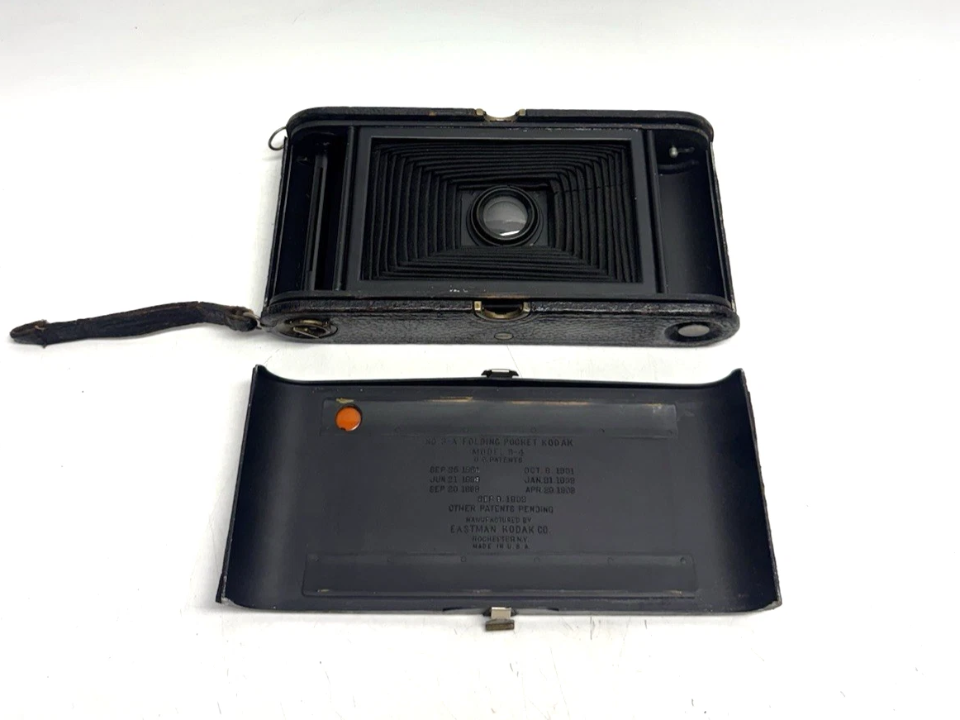
The Kodak No. 3A Folding Pocket Autographic is a variant of the No. 3A, equipped with the autographic system that allowed for easy notation on film. This feature made the camera not only a tool for capturing images but also a way to record memories and document events more effectively. The folding design meant the camera could be tucked away when not in use, making it more convenient for daily use compared to previous models.
Much like its predecessors, the camera was affordable and relatively simple to operate, appealing to amateur photographers. It was a favorite for families and travelers who enjoyed capturing moments and adding a personal touch to their photographs. On the secondhand market, the Kodak No. 3A Folding Pocket Autographic typically sells for $100-$180, with condition and completeness of accessories affecting the price.
Mahogany Large-Format Studio Camera
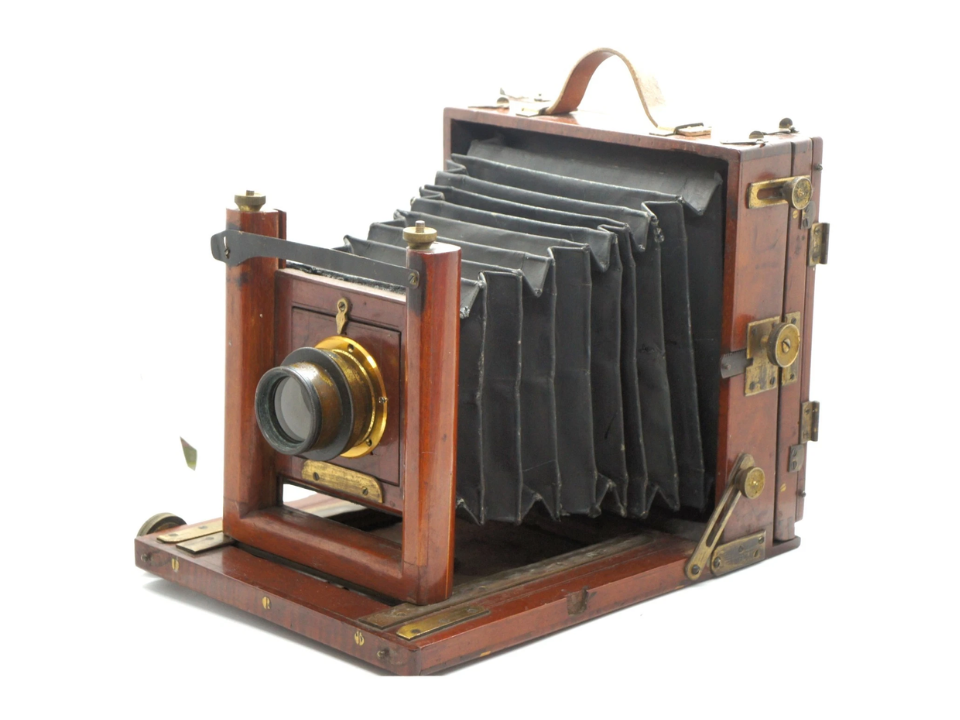
This large-format studio camera, crafted from mahogany, was designed for professional photographers who needed high-resolution images. These cameras typically used glass plates or large negatives, which were far superior in image quality compared to roll film at the time. The large format allowed photographers to capture incredible detail, making them ideal for studio portraits and fine art photography.
Collectors today value these cameras for their craftsmanship and historical significance. Many were designed to be used in controlled environments, such as studios or formal settings, but some models were also used outdoors by landscape photographers. Depending on the condition and whether the camera includes its lens and original accessories, these can sell for $300-$800, with complete and well-maintained examples reaching even higher prices.
Gundlach Optical Korona II Dry-Plate 5×7 Camera
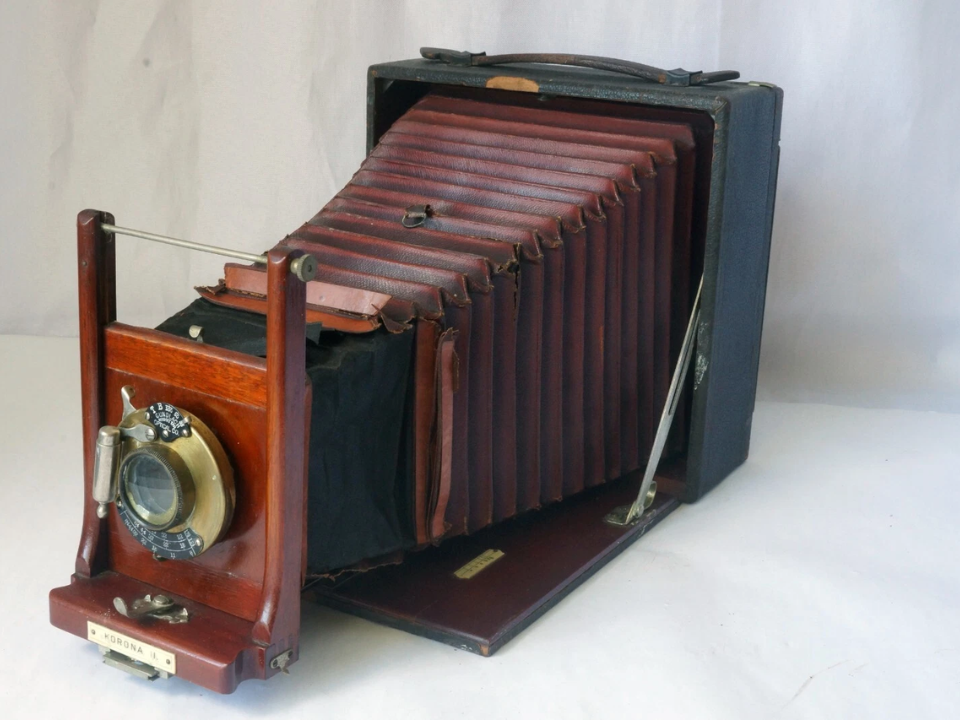
The Gundlach Optical Korona II Dry-Plate camera was a large-format camera that used dry plates, a medium that predated roll film. These cameras were highly valued by photographers who needed to capture fine details in their images. The 5×7 format provided a balance between portability and image quality, making it a popular choice for landscape and architectural photographers of the time.
Though not as well known as Kodak cameras, the Korona II is still highly prized among collectors, especially those focused on historical photographic equipment. This camera’s value depends largely on the condition of the body, the lens, and whether it includes its original parts. A well-maintained Gundlach Optical Korona II can be worth $200-$500 on the market.
Kodak No. 2A Brownie Autographic
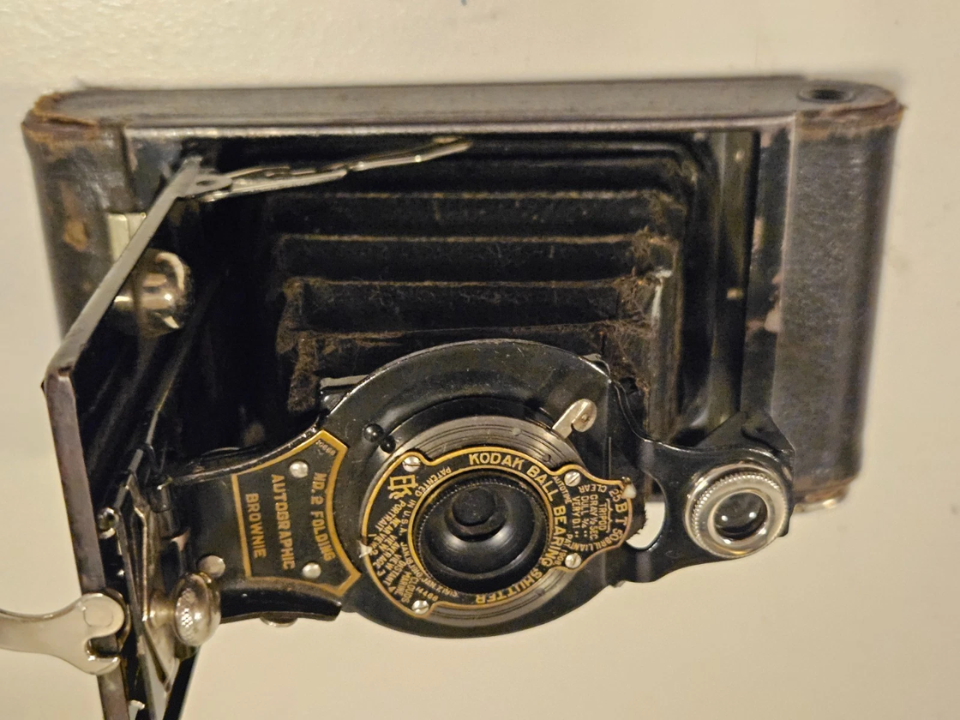
The Kodak No. 2A Brownie Autographic combined the simplicity of the Brownie design with the added feature of Kodak’s autographic system. This allowed users to write captions or notes directly on the film backing, a feature that was unique for its time. The camera’s portability and ease of use made it a popular choice for families who wanted to document their everyday moments.
It represented a shift in the way people engaged with photography, making it easier to personalize photos with comments and memories. As a collector’s item, the Kodak No. 2A Brownie Autographic is typically priced at $60-$100, though some models with original accessories or those in better condition can fetch higher prices.
Vintage Box Camera
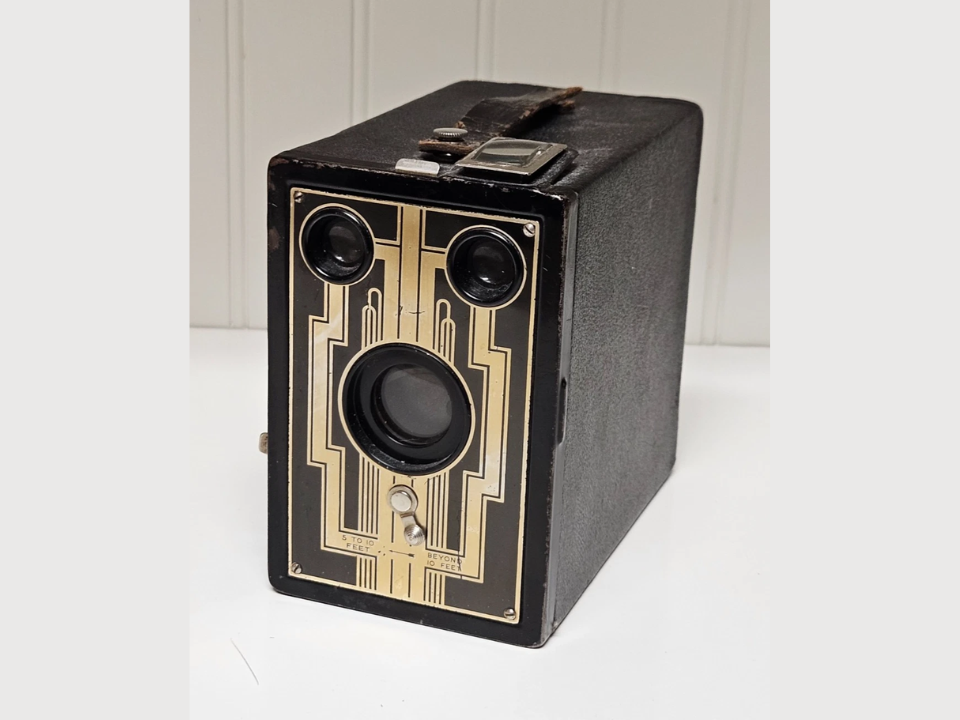
The vintage box camera, often associated with Kodak’s early models, was a simple, affordable camera designed for everyday use. It featured a box-like body and used large-format negatives, producing images with moderate quality that were perfect for casual snapshots. These cameras were among the first to democratize photography, offering an accessible option for people who wanted to capture everyday moments.
While these cameras were mass-produced, their simplicity and design make them a nostalgic piece of photographic history. Many vintage box cameras can still be found in working condition, with prices typically ranging from $40-$100 depending on condition. Rare models or those in excellent condition with original accessories can be worth more.
Graflex RB Series D

The Graflex RB Series D was one of the most popular cameras for press photographers in the early 20th century. This large-format camera used 4×5 film and was known for its durable design, making it a reliable tool for journalists and documentary photographers. It featured a viewfinder and a rotating back, making it easier to capture images in various orientations.
Because of its significant role in photojournalism and its robust build, the Graflex RB Series D is highly valued by collectors today. Depending on its condition, lens, and accessories, the camera can fetch anywhere between $200-$400.
Kodak Six-20 Brownie
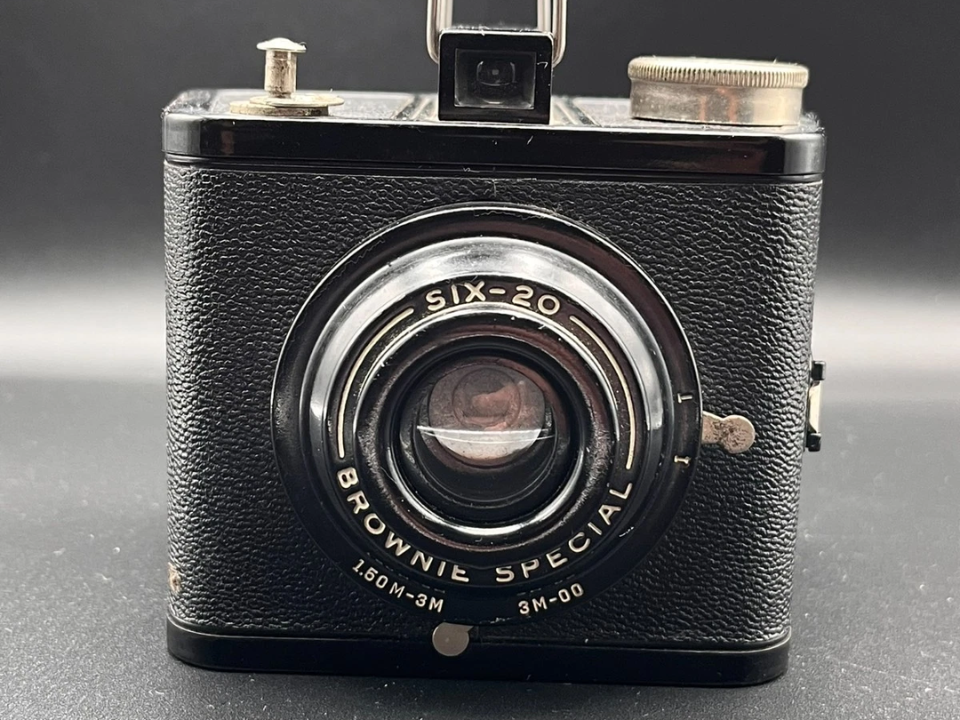
The Kodak Six-20 Brownie was introduced in 1930 and became one of the most widely used cameras of its era. The camera used 620 film and offered a simple, no-frills design that made it incredibly user-friendly. Its compact, lightweight build made it a great choice for family photographers and those new to the hobby.
Collectors value the Kodak Six-20 Brownie for its simplicity and the role it played in the popularization of amateur photography. Market prices for this model typically range from $40-$80, with models in excellent condition fetching slightly higher prices.
Leica II (Model D)

The Leica II (Model D) was one of the first 35mm rangefinder cameras produced by Leica and is often credited with revolutionizing the way photographers captured images. Released in 1932, it used 35mm film and featured interchangeable lenses, offering greater versatility and image quality compared to other cameras at the time.
The Leica II is a highly regarded model among collectors, particularly those interested in the history of professional photography. Depending on the condition, with or without the original accessories, the Leica II typically sells for $500-$1,500.
Agfa Billy Record
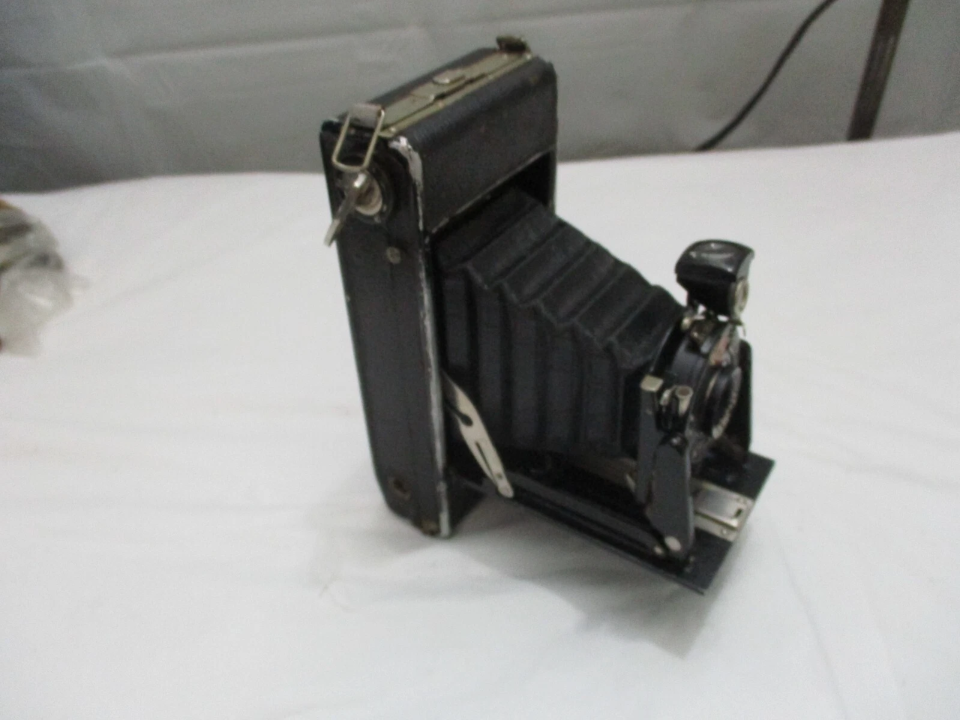
The Agfa Billy Record is a folding medium format camera that was popular in the 1930s. It used 120 film and featured a quality lens that was capable of producing sharp, detailed images. The folding design made it convenient for photographers who needed portability without sacrificing image quality.
While the Agfa Billy Record was aimed at the amateur market, it is now a sought-after camera among collectors, especially those interested in folding cameras. Depending on condition and completeness, the Agfa Billy Record typically sells for $50-$150.
This article originally appeared on Avocadu.
